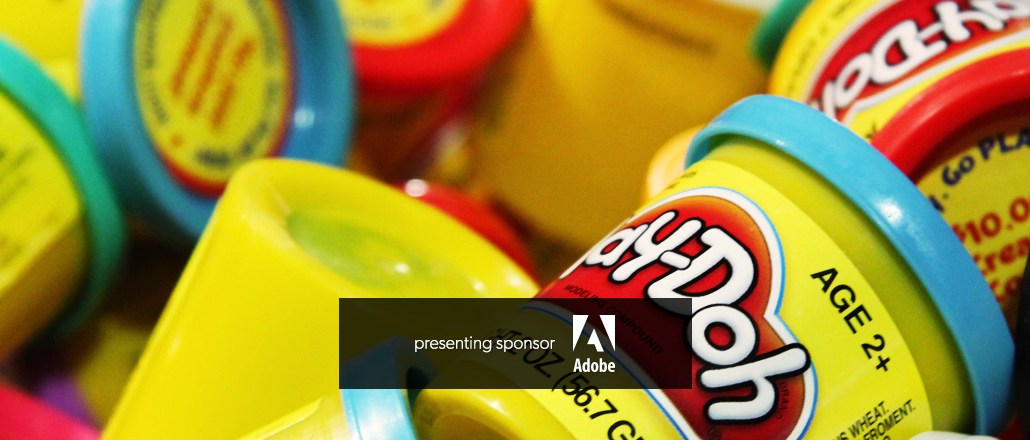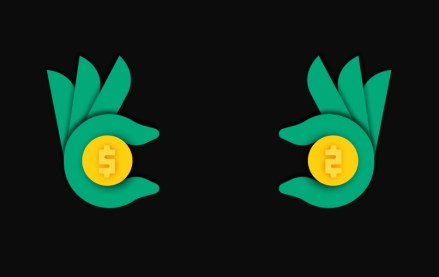Eight passes left to attend the Digiday Publishing Summit
Rainbow bagels and Pizza Rat: Inside Play-Doh’s branded-content strategy

This is part of a series on content strategies for brands as publishers, a deep dive into how brands are building out content offerings.
In a time when kids learn to swipe before they can walk, you’d be forgiven for thinking squishing Play-Doh is no longer a rite of passage. But the Hasbro brand has found a way to make itself relevant to both kids and their parents through an array of creative branded content.
One way the brand has done this is by capitalizing on current events. Taking a cue from the 24-hour news cycle, Play-Doh’s social, brand and PR teams follow a “24-hour imagination cycle” — where they keep track of viral and cultural moments in real time. They then find ways to whimsically insert the brand into the conversation and drive engagement by recreating those moments out of Play-Doh.
When “Pizza Rat” went viral last fall, for example, the company tweeted out its own Play-Doh Pizza Rat. It was accompanied by the copy “In a city that’s famous for Pizza, even the animals wants a slice of the action. #PizzaRat.” The post had over 32,000 Likes, 1,200 comments and 2,600 shares.
More recently, when the “Rainbow bagel” emerged as New York’s latest weird food trend, the brand created one using Play-Doh and circulated it across social media, amassing nearly 7,500 likes, 100 comments and 200 shares across Play-Doh channels.
“Play-Doh naturally lends itself to the process of creation and storytelling and through digital, we are giving our fans another platform to exercise their creativity and imagination,” said Victor Lee, svp of digital marketing at Hasbro. “It may be a tactile experience, but the visual nature of platforms today helps us continue to inspire that creativity with our content.”
That content comes in the form of colorful still images and GIFs for Instagram, and stop-motion animation videos for YouTube and Facebook. The brand has also taken to live streaming, hosting its first Facebook Live broadcast last month. The 42-minute stream featured an in-house Play-Doh sculptor creating emojis out of Play-Doh. The video organically reached over 573,000 people, generated nearly 500 comments during the broadcast and has been viewed over 25,000 times.
“On other channels fans may only see the end-product, but what we’re trying to demonstrate through Facebook Live is that creativity doesn’t have to be difficult,” said Lee. “We’re making them a part of the process, giving them an authentic look at how the sculptures are made and letting them interact with the personalities behind them in real time.”
Play-Doh’s strategy hits all the right notes, said Kari DePhillips, owner at The Content Factory. “I think it’s brilliant, especially since it ties in with the versatility of the product while showcasing it,” she said. “That’s something you can only do with Play Dough; it’s the very nature of the product that enables them to do really cool things in real time at a relatively low cost.”
Given its scale and global reach, Facebook is Play-Doh’s key platform, said Lee. With 1.8 million fans on the social network, the brand often gets the most engagement on Facebook. That’s not to say it doesn’t focus on other platforms. According to Lee, posts on Instagram are a “colorful burst of creativity,” whereas claymation and unboxing videos are particularly popular on YouTube. The brand is also taking content beyond social media. A Play-Doh movie in partnership with 20th Century Fox is currently in development.
“While we hope that great content ultimately drives commerce, that is not our primary objective,” said Lee. “Elevating engagement among our fans is the ultimate measure of success for us.”
More in Marketing

Three signs the creator economy is at an inflection point for marketers
From AORs to affiliate programs, marketers are institutionalizing the creator economy — and creators are now at the center.

How resell platforms like ThredUp, Depop are navigating the tariff economy
Tariffs are fueling a secondhand shopping boom, with platforms like ThredUp, Depop and OfferUp reporting record growth, new users and increased engagement. Now, they’re under pressure to retain cost-conscious shoppers.

The creator economy wants to be a mature media channel, but measurement is holding it back
As influencer marketing grows up, measurement fragmentation and pricing inconsistency stand in the way of full media channel status.





